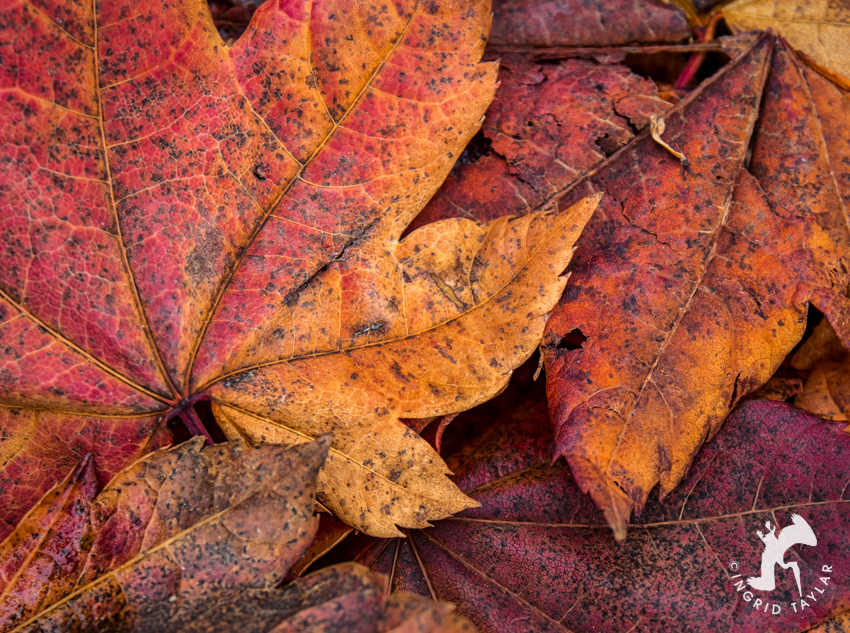
I first read Rainer Maria Rilke one autumn in “Letters to a Young Poet” — a book handed off to me with pages stained by office carbons. Rilke’s letters to Franz Kappus, published by Kappus after Rilke’s death, are sympathetic and inspired. There’s a reason this collection finds its way to the paws of young writers, as it did mine that fall day.
Everything is gestation and then birthing. To let each impression and each embryo of a feeling come to completion, entirely in itself, in the dark, in the unsayable, the unconscious, beyond the reach of one’s own understanding, and with deep humility and patience to wait for the hour when a new clarity is born: this alone is what it means to live as an artist: in understanding as in creating.
~ from Letters to a Young Poet
The words of Rilke conceal a bigger life of travail, anxiety, self-exploration, self-indulgence, and illness — in other words, the building blocks of artistic expression. That artists can project imagery so distant from their personal strife doesn’t seem to me a falsehood, but rather a testament to how one can transmute pain into beauty, insight and lightness — whether through word, paint, music or pixels.
Here is Rilke’s poem “Autumn” — in celebration of an especially beautiful autumn in Seattle, now taking on the frost of winter in its own transmogrification.
The leaves are falling, falling as if from far up,
as if orchards were dying high in space.
Each leaf falls as if it were motioning “no.”And tonight the heavy earth is falling
away from all other stars in the loneliness.We’re all falling. This hand here is falling.
And look at the other one. It’s in them all.And yet there is Someone, whose hands
infinitely calm, holding up all this falling.[I don’t generally move leaves or plants for photos. I enjoy the challenge of finding the composition already in place.]
European Starling eating from a plant I have yet to identify. Any ideas?
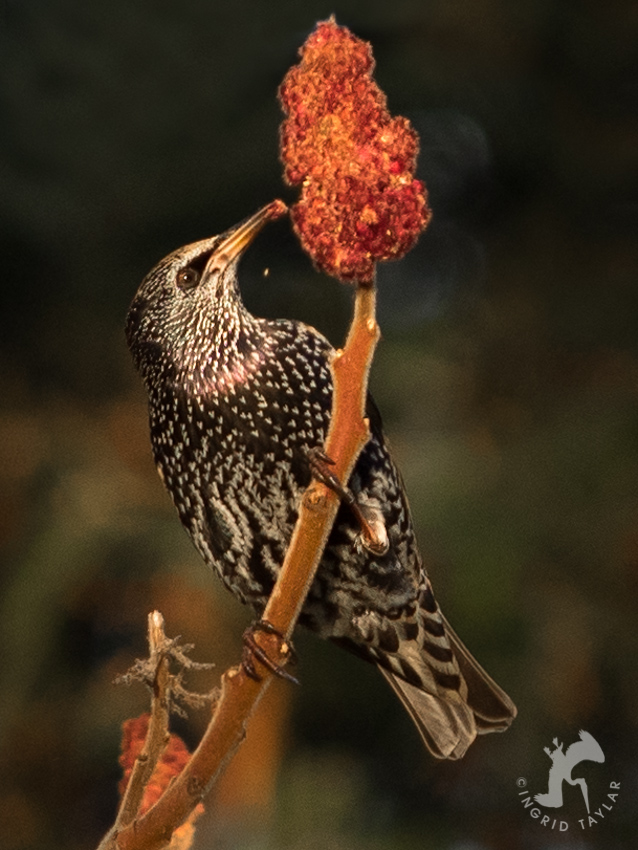
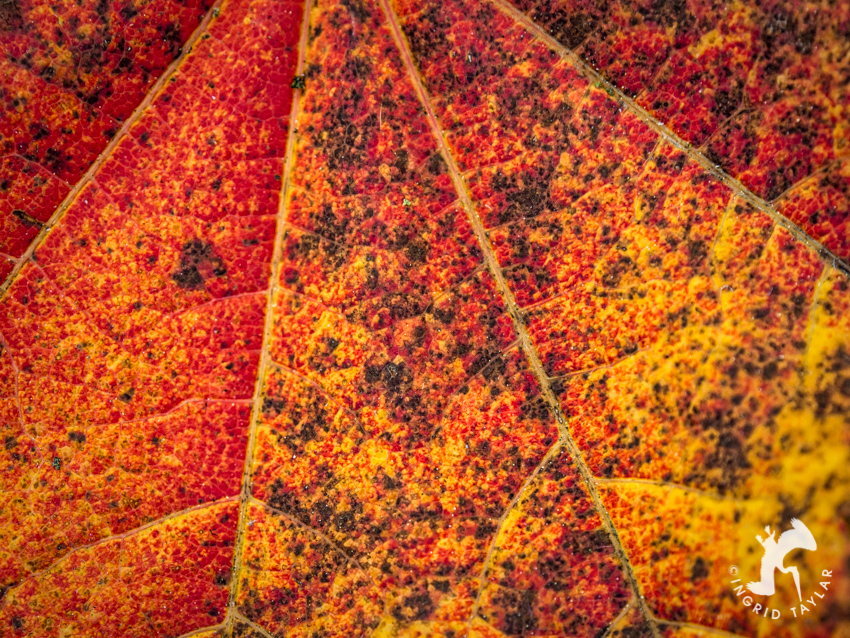
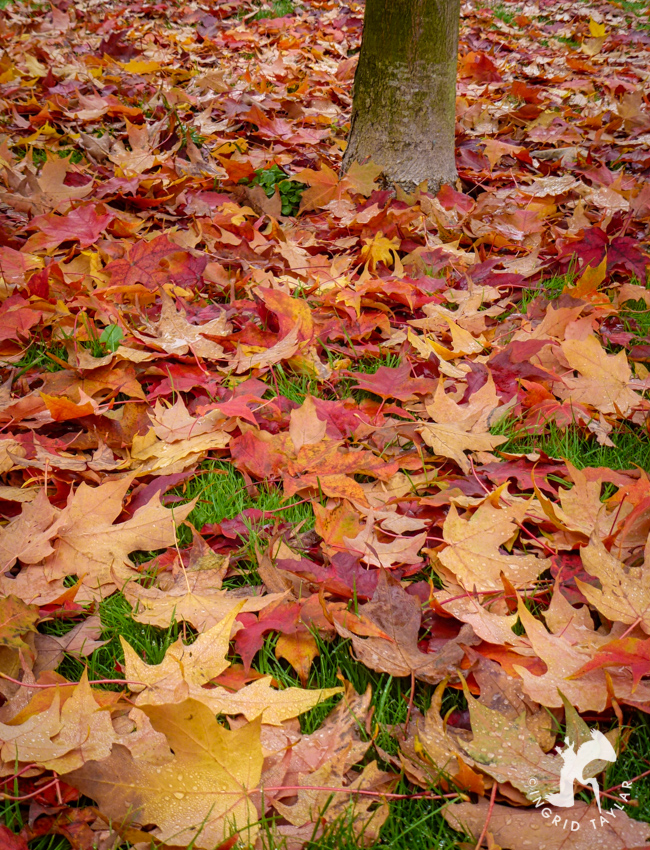
A squirrel eating seeds in the highest branches of a maple tree. Squirrels give away their position by the maple leaf pods, fluttering like helicopters below their perches.
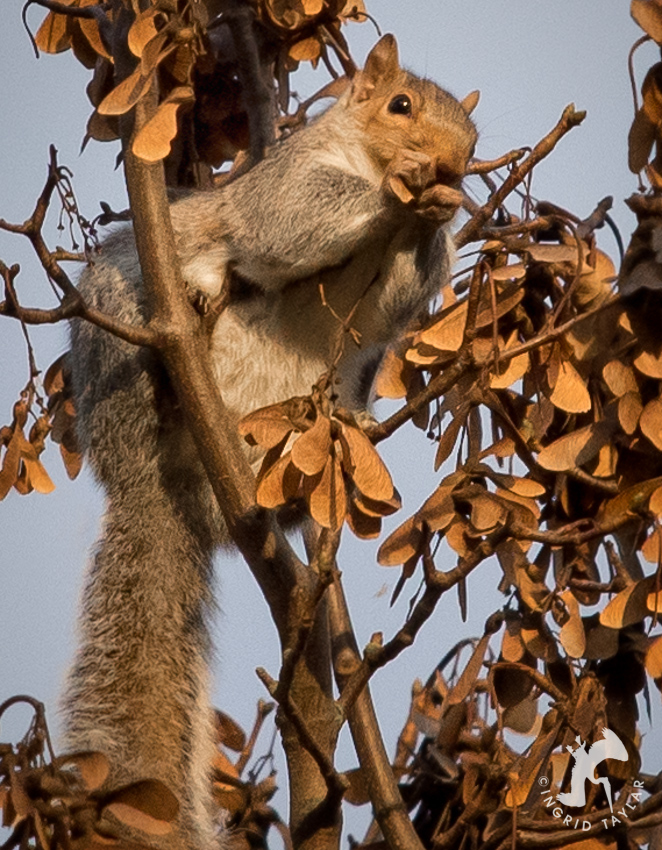
Autumn leaf at low tide.
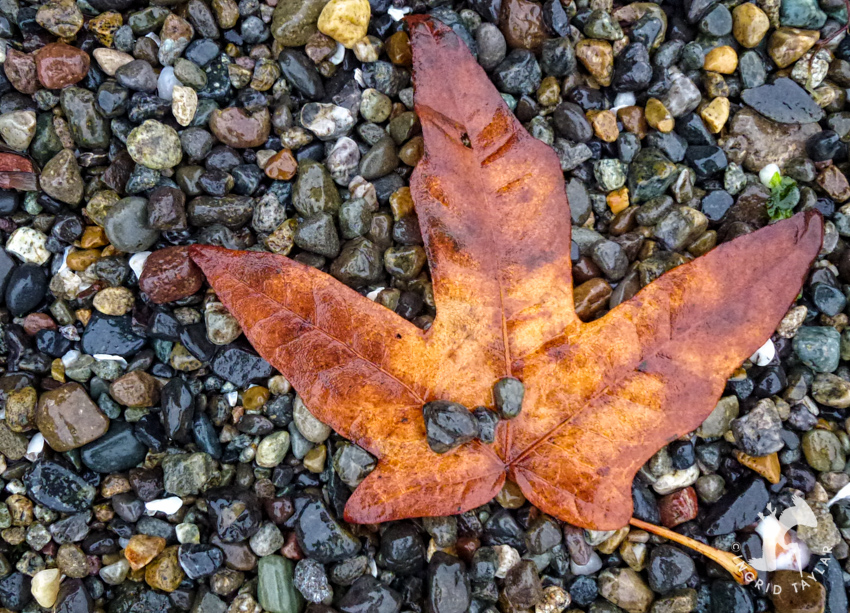
An uncommonly rich Seattle fog rolling in across Elliott Bay, toward downtown.
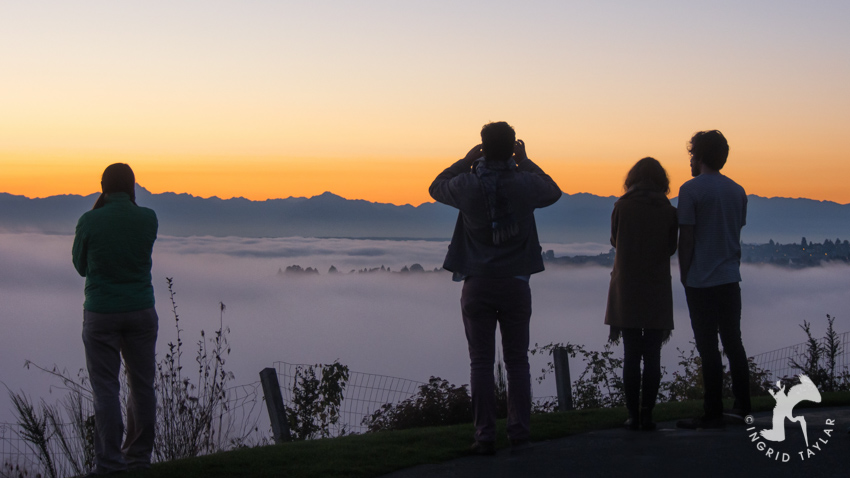
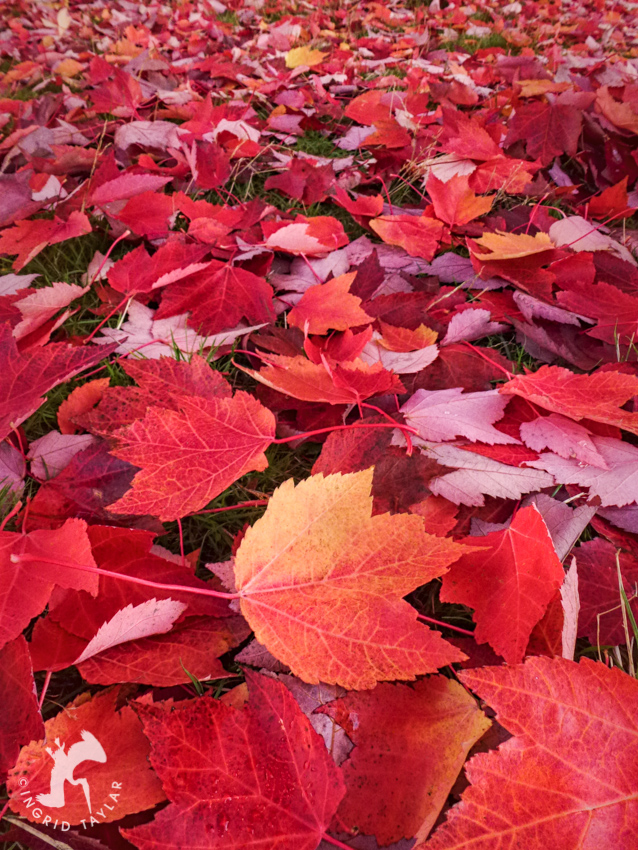
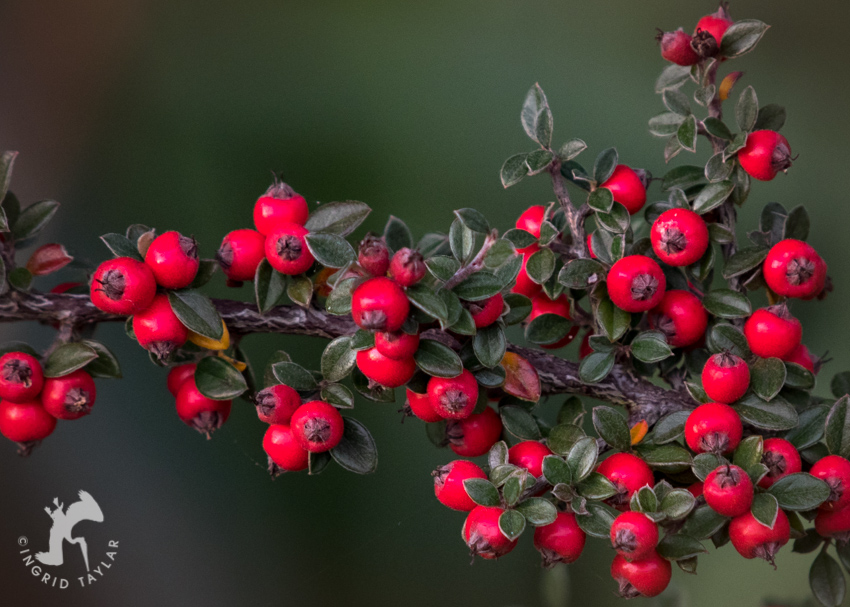
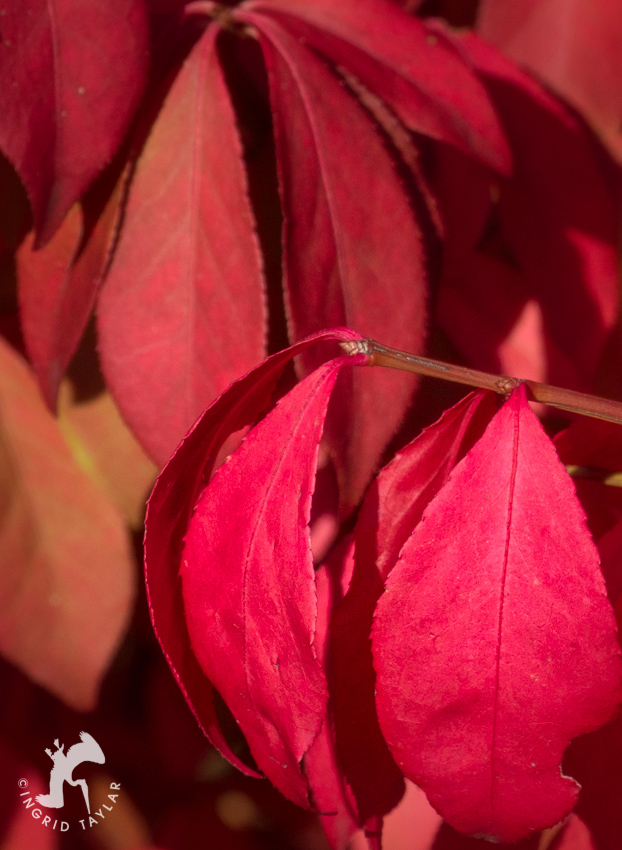
Puddle reflection with autumn leaves.
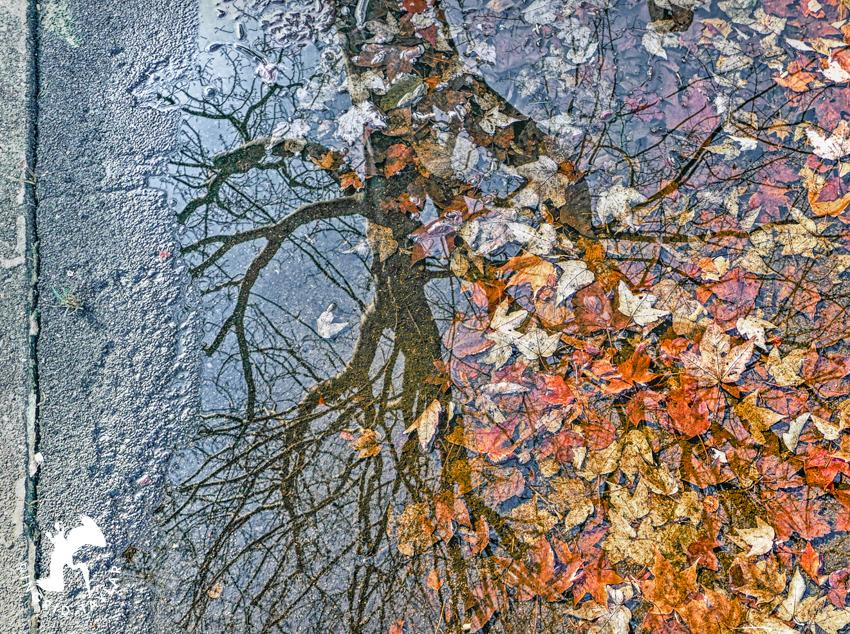
First ice crystals of winter.
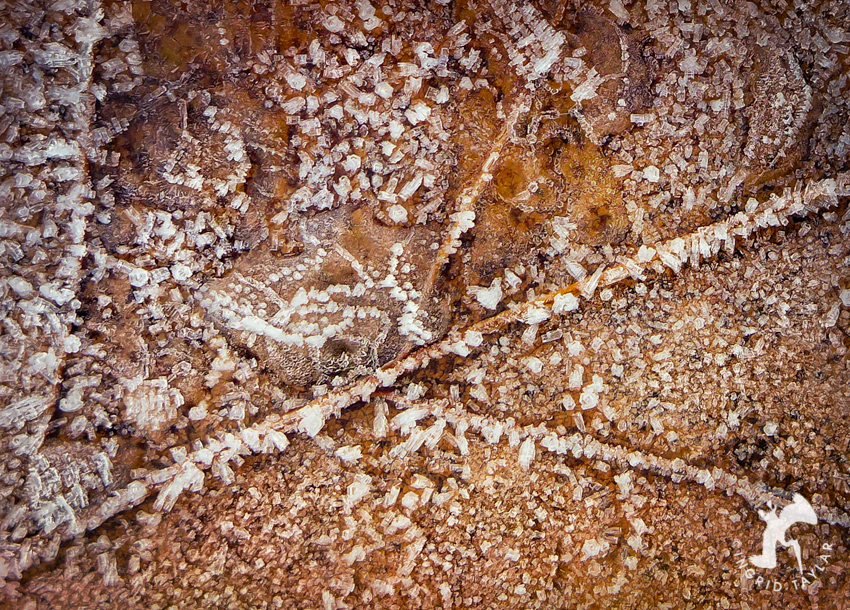

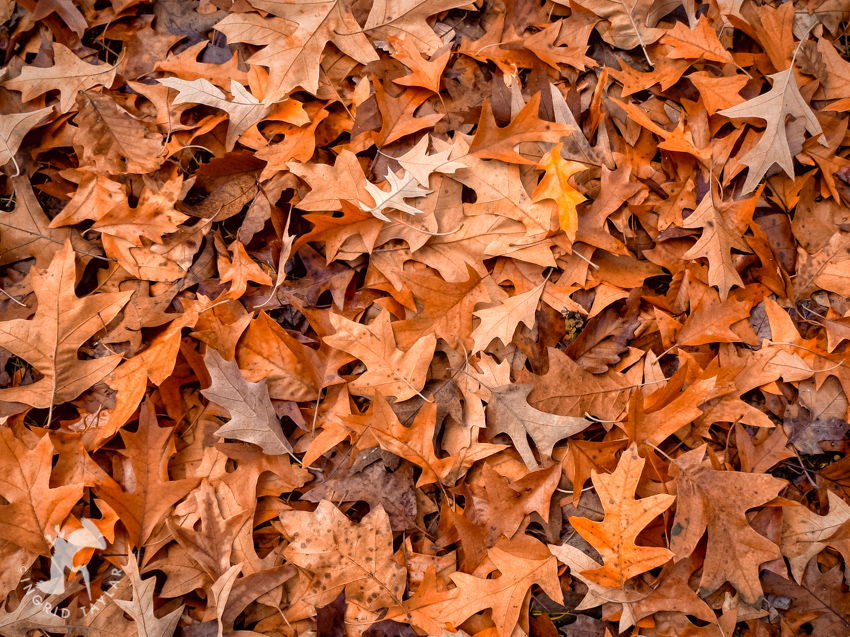
No Thanksgiving meal (not even Tofurky) or Christmas gift (not even faux fur) can top these offerings from Above.
Who doesn’t marvel over the European Starling’s feather pattern, in which I detect tiny white hearts and intricate snowflake designs!
Who doesn’t want to live in peace with our ubiquitous bushy-tailed, tree-climbing buddies? They always find something to eat, no matter what the season or climate or terrain or elevation.
Who doesn’t admire nature’s “fall colors,” whether the leaves are still clinging to their branches or gracing the ground?
Possibly my favorite photo is the one that shows vibrant spring-green grass peeking through autumn-yellow-red-orange leaves. If I’m not mistaken, that’s rye grass — a soft rug that Earth’s creator/caretaker lays down when other grasses are dormant.
A few years ago, a beloved mounted patrol horse named Tom was ailing. The only thing he would eat was rye grass. So each day I stopped by my church grounds and cut several bags worth of rye grass, then delivered it straight to Tom. He and I inhaled its divine scent as he plunged his gentle lips into my palms and gorged on the manna.
The close-up of the frosty leaf is exquisite, Ingrid. But I’m glad we don’t have frost here. I’ll look at it through your lens any day!!!!
Question: When you described the various ways artists project imagery — “word, paint, music, or pixels” — it made me wonder whether “pixels” includes both still photography and videos? I would think so.
Thank you for these Thanksgiving treats, Ingrid. They’re every bit as appreciated as the homemade e-cards and such that I send you.
CQ, I simply can’t believe I inadvertently overlooked this lovely response to the post. Thank you, ever so belatedly, for taking such time with your observations, and for identifying what I most definitely couldn’t: rye grass, the “soft rug.” That’s wonderful imagery. What was it about the rye grass that appealed to Tom over all others, do you know?
You’re seeing things in the feathers, leaves and patterns that even I miss as I look through the lens, and then scrutinize on my computer screen. The white hearts hadn’t occurred to me until now, because of your vision. I see them as spots, and that’s utterly remiss considering how often I watch and photograph Starlings! That’s a welcome artistic and aesthetic perspective on these much maligned birds, and it’s one I shall not now forget. I might have to post a more closeup look in the blog soon, to point out this very observation of yours (with full attribution, of course).
Well, if the sweet scent and soft feel of the rye grass is any indication of its taste and texture, then I would guess it was as delicious to Tom as a smooth, sweet non-dairy ice cream treat is to me!
I look forward to a close-up of the Starlings’ feathers. I hope the magnification of the hearts and snowflakes makes them clearer instead of indistinguishable!
Your reply was well worth waiting for, Ingrid. Having just now discovered it — and noting its December 12th date — I must say that I’ve been slow in replying to your reply. I guess our comments are hidden in a cave — as if in winter hibernation.
Beautiful images Ingrid. I am glad that you were able to get outside with your camera and bring us this wonderful repertoire of autumn color. Happy Thanksgiving to you and yours!
Thank you for sharing what you “see”….beauty is everywhere….
I love Rilke and I read him long time ago, same book. This idea of the ‘embryo’ is so revealing to me, when he says: “…with deep humility and patience to wait for the hour when a new clarity is born…” It is precisely this ‘embryo’ that dwells in human facades up to the point of stagnation; yet may end up transforming its hell into beauty, or some form of communication with the world in attempts to regain some balance and survive the mental chaos of the ego, and resurface with “worthwhile” fruition for the world, at least in attempts to reconcile the pitfalls of mortality and its weighing down of our souls. The sprouting outward remains to be disclosed and photosynthetic. Meanwhile inwards, the embryo may also dwell in dormancy and sleep many winters and springs, submerged in the placenta of latent ego silence.
CQ: I’m with you, no holiday should involve the massacre of innocent victims on earth; and each day is a ‘thanksgiving’ day. I’m much better off looking at these images through the eyes of a pixel artist.
Maria, I think this book must rate among the most popular of literary introductions, don’t you? The idea of transforming hell into beauty is deceivingly powerful. It’s taken me time to view life that way, particularly when recognition of all life’s suffering and sorrows tends to push those inspirations even further inward. What you say about dormancy is poignant. I can envision that process, nourished in its inwardness until, as you put it, sprouting outward. At some point, I suppose it becomes an imperative to embrace one’s passions and one’s compassion as a countervailing force to restore balance, perhaps the only way to move things back to center from chaos.
Your photos – especially these warm, rich, earthy ones – can feed a hungry soul. I’m now completely satisfied to see autumn anew. Thank you.
Bea, I hope this finds you well as you and your family move into the heart of the holidays. Thanks so much for stopping by and commenting.